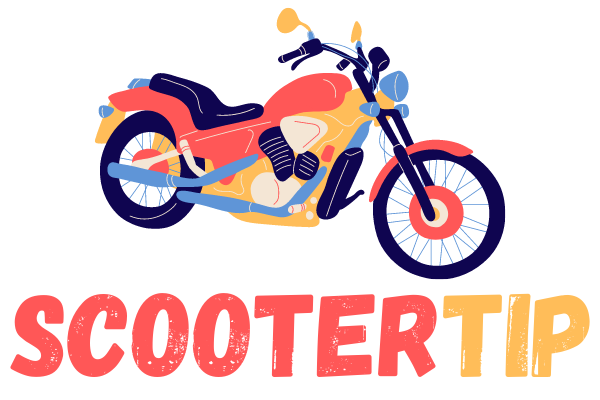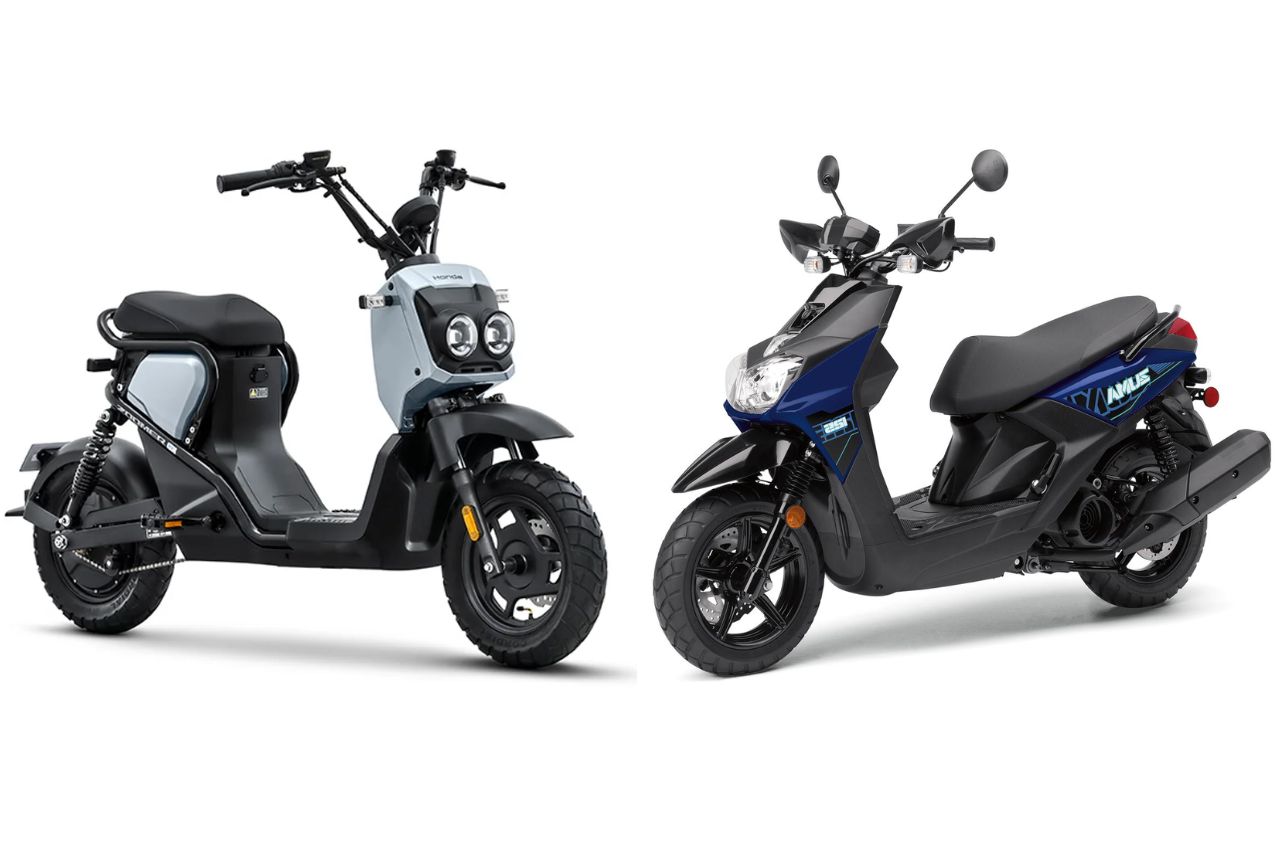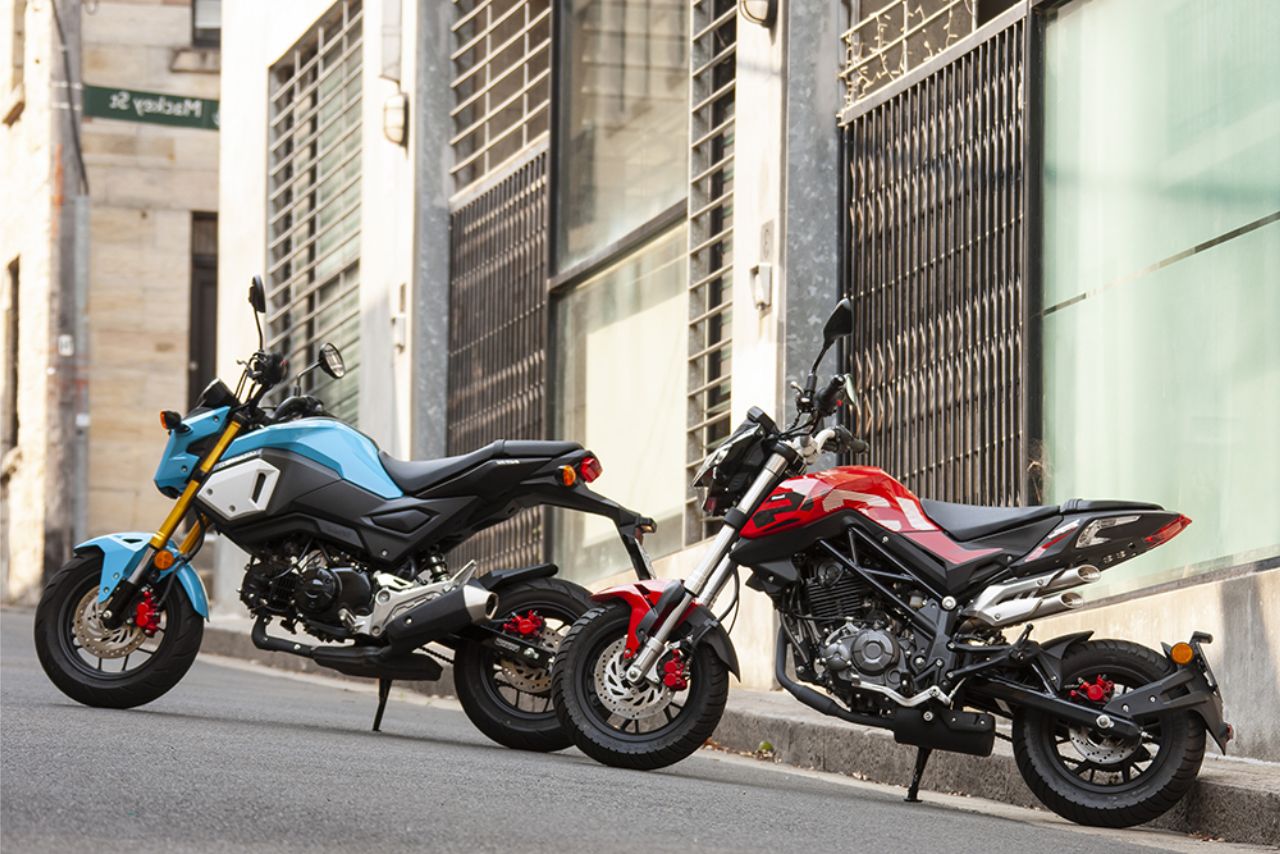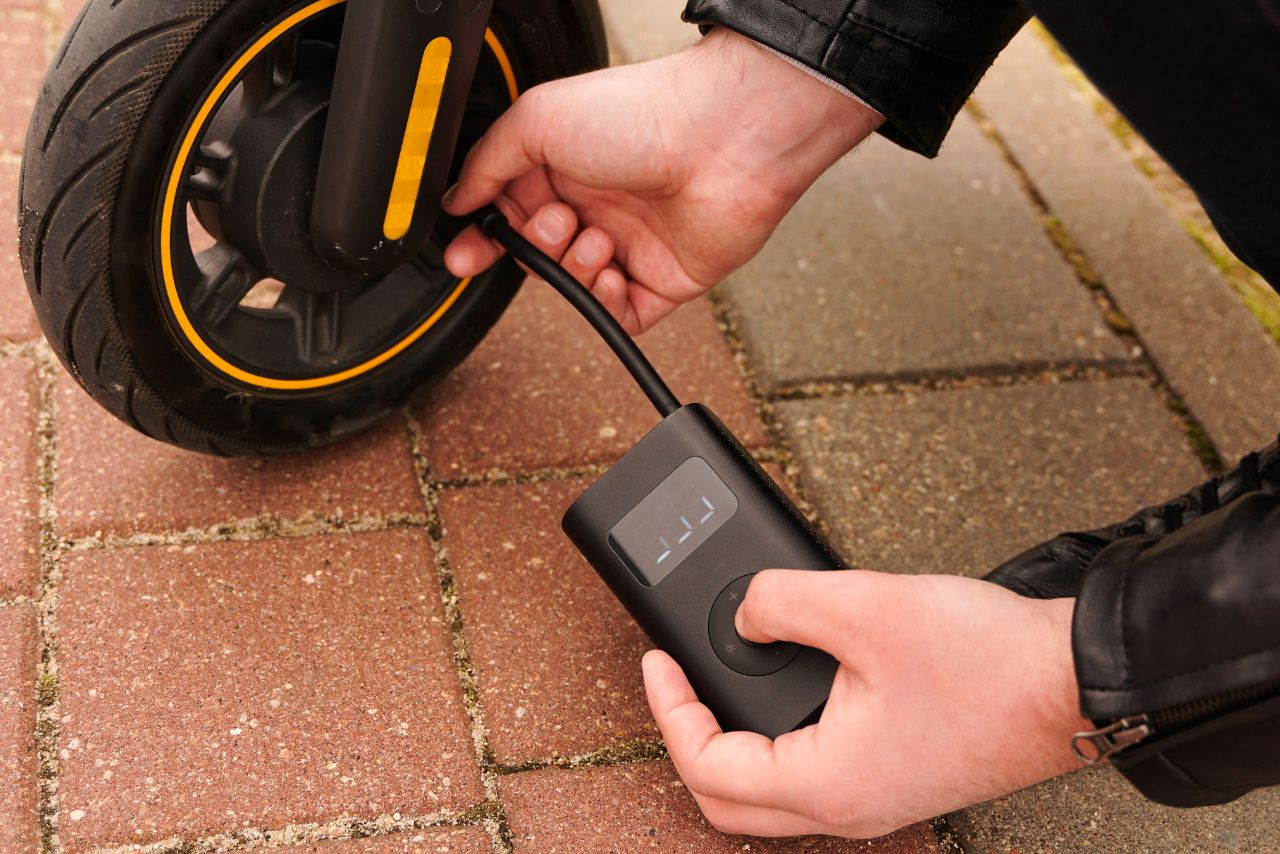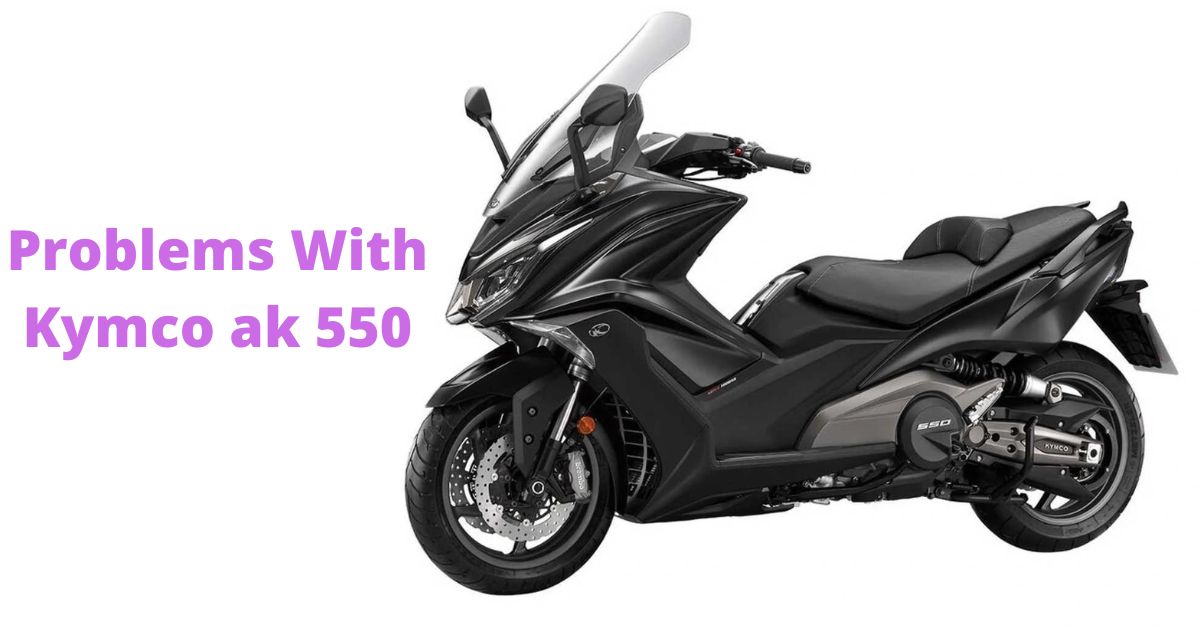Are you torn between the Honda Ruckus and the Yamaha Zuma? Well, you’ve come to the right place! In this article, we’ll be comparing these two popular scooters to help you make an informed decision.
The Honda Ruckus is known for its rugged and minimalist design. With its chunky tires, exposed frame, and boxy shape, the Ruckus exudes a unique and urban appeal.
Whether you’re zipping through city streets or exploring off-road trails, the Ruckus is built to handle it all. On the other hand, the Yamaha Zuma offers a sportier look and feel.
With its sleek lines and aggressive styling, the Zuma is a favorite among riders who want a more dynamic and spirited ride.
Equipped with a powerful engine and responsive handling, the Zuma delivers a thrilling and exhilarating experience on the road.
So, are you ready to find out which scooter is the right fit for you from Honda Ruckus vs Zuma? Let’s dive into the details and compare the Honda Ruckus and the Yamaha Zuma head-to-head.
1. Performance Comparison
When it comes to comparing the performance of the Honda Ruckus and the Zuma, there are a few key factors to consider. Let’s take a closer look at how these two scooters stack up against each other:
Engine Power
Fuel Efficiency
Handling and Maneuverability
Storage and Practicality
| Honda Ruckus | Zuma | |
|---|---|---|
| Engine | 49cc | 50cc |
| Top Speed | 40-45 mph | 40-45 mph |
| Fuel Efficiency | 114 mpg | 103 mpg |
Both the Honda Ruckus and Zuma offer impressive performance and practicality for urban commuting. While the Ruckus excels in maneuverability and storage capacity, the Zuma provides stability and versatility.
2. Design and Style
When it comes to design and style, the Honda Ruckus and the Yamaha Zuma each have their own unique appeal. Let’s take a closer look at what sets them apart in terms of aesthetics.
Honda Ruckus

Yamaha Zuma

In terms of design and style, both scooters have their own unique charm.
| Honda Ruckus | Yamaha Zuma |
|---|---|
| Rugged and industrial-inspired design | Sporty and aggressive appearance |
| Boxier frame and minimalistic bodywork | Sleek bodywork with sharp lines |
| Vibrant color options | Bold color choices |
| Chunky tires, high-mounted handlebars | Taller windscreen, wider seat |
The robust and utilitarian look of the Honda Ruckus appeals to those seeking a rugged and urban aesthetic, while the Yamaha Zuma’s sporty and dynamic design caters to riders looking for a sleek and modern scooter.
3. Features and Technology
The Honda Ruckus and the Yamaha Zuma are both popular choices in the world of scooters. Let’s take a closer look at the features and technology that set these two apart.
1. Engine Performance
2. Design and Style
3. Comfort and Convenience
4. Technology and Safety
| Honda Ruckus | Yamaha Zuma | |
|---|---|---|
| Engine | 49cc | 125cc |
| Fuel System | Carbureted | Fuel-injected |
| Seat Storage | Spacious | Moderate |
| Instrument Panel | Basic | Digital |
The Honda Ruckus and the Yamaha Zuma have their own unique features and technology.
The Ruckus stands out with its rugged design and practical storage, while the Zuma offers a sportier look and more advanced instrumentation.
4. Price and Affordability
When it comes to buying a scooter, two popular options that often come up are the Honda Ruckus and the Yamaha Zuma.
One of the key factors that can influence your decision is the price and affordability of these two models. So, let’s take a closer look at how they compare in terms of cost.
Honda Ruckus
The Honda Ruckus is known for its rugged design and reliable performance. In terms of price, the Ruckus tends to be more budget-friendly compared to some other scooters on the market.
The exact price can vary depending on factors such as location and any additional features or accessories you choose to add.
Here are a few key points to consider:
Yamaha Zuma
The Yamaha Zuma is another popular choice among scooter enthusiasts. It offers a stylish design and excellent fuel efficiency. Let’s explore the price and affordability aspect of this model:
Comparison
To give you a better idea of the price difference between these two models, here’s a simple markdown table:
| Model | Base Price Range |
|---|---|
| Honda Ruckus | $2,749 – $2,799 |
| Yamaha Zuma | $2,599 – $2,699 |
Remember, these prices are approximate and may vary depending on various factors. It’s always a good idea to check with local dealerships or online marketplaces for the most up-to-date pricing information.
5. User Reviews
Here’s what users have to say about the Honda Ruckus and Yamaha Zuma:
Honda Ruckus
Yamaha Zuma
Both the Honda Ruckus and Yamaha Zuma have their own unique strengths and appeal to different types of riders.
The Ruckus is known for its rugged design, fuel efficiency, and overall reliability, making it an excellent choice for urban commuters.
| Honda Ruckus | Yamaha Zuma | |
|---|---|---|
| Engine | 49cc | 125cc |
| Fuel Efficiency | Excellent | Good |
| Design | Rugged | Versatile |
| Storage Space | Limited | Ample |
On the other hand, the Zuma offers more power, versatility, and off-road capabilities, attracting adventure seekers and those looking for a bit more speed.
Watch Video: Honda Ruckus vs Zuma
Conclusion: Honda Ruckus vs Zuma 💭
After comparing the Honda Ruckus and the Zuma, it’s clear that both scooters have their own unique features and advantages. Both the Honda Ruckus and the Zuma have their own strengths and weaknesses.
It ultimately comes down to personal preference and priorities. Whether you prioritize power and performance or fuel efficiency and affordability, both scooters offer a reliable and enjoyable riding experience.
So, choose the one that aligns with your needs and enjoy the freedom of two-wheeled adventures.
FAQs
What Is the Main Difference Between a Honda Ruckus and A Zuma?
The main difference between a Honda Ruckus and a Zuma is the engine size and power. The Honda Ruckus has a larger 50cc engine compared to the Zuma’s smaller 49cc engine.
The larger engine provides more power for the Ruckus, allowing for faster acceleration and higher top speeds.
How Much Does Each Scooter Cost?
The Honda Ruckus has a starting MSRP of $2,599, while the Yamaha Zuma has a starting MSRP of $2,599. Prices may vary by location.
What Type of Fuel Do They Use?
Both the Honda Ruckus and the Yamaha Zuma use regular unleaded gasoline.
What Type of Transmission Do They Have?
The Honda Ruckus has an Automatic V-Matic belt drive, while the Yamaha Zuma has an Automatic CVT (Continuously Variable Transmission).
What Are the Average Gas Mileage Ratings for Each Scooter?
The Honda Ruckus has an estimated fuel economy of 132 MPG, while the Yamaha Zuma has an estimated fuel economy of 114 MPG.
